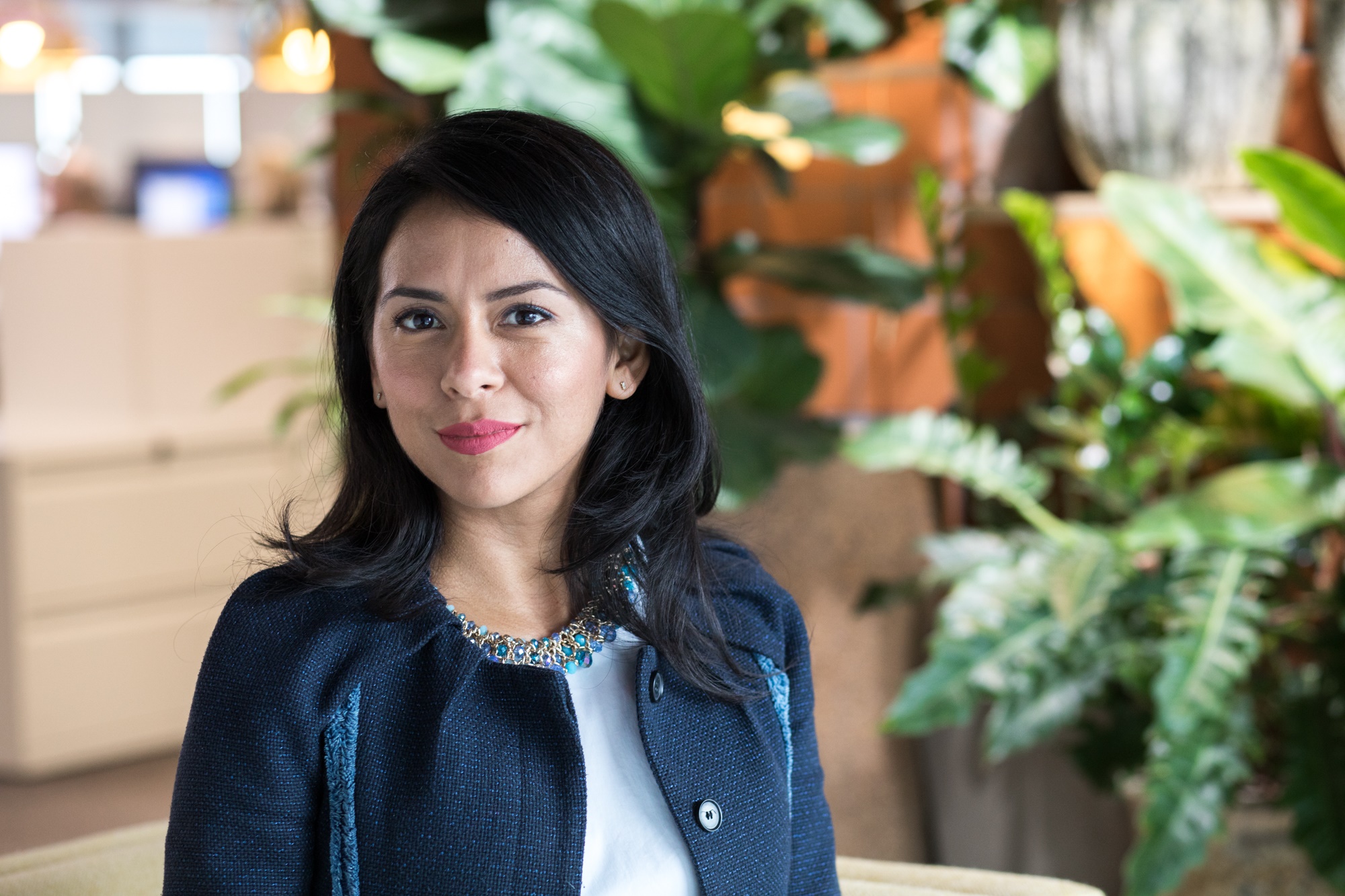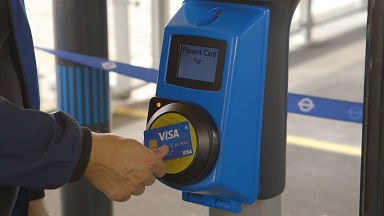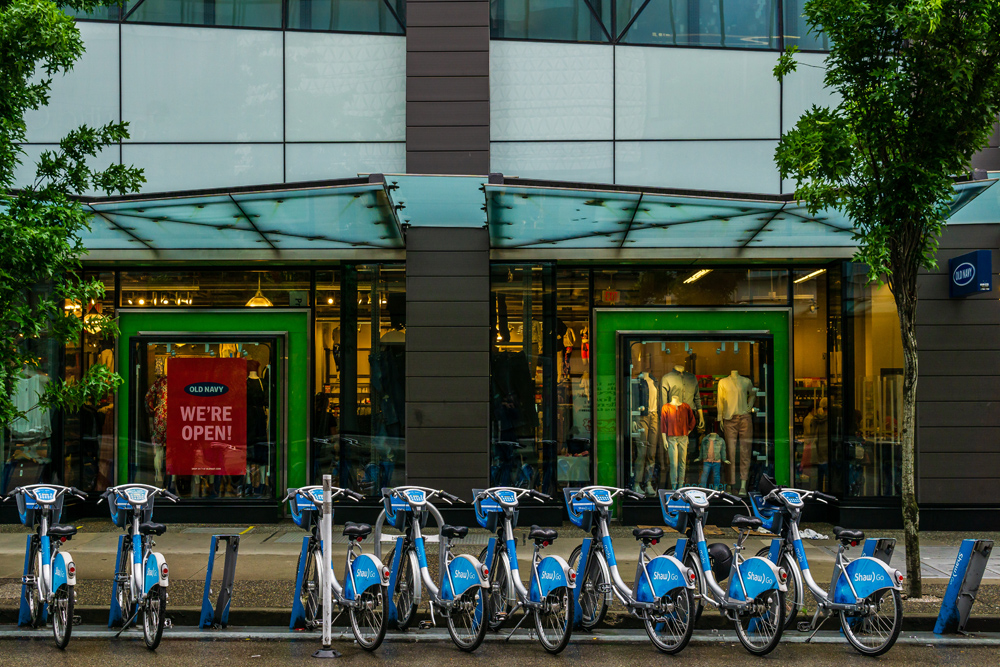
Imagine going into a Starbucks or Costa and – instead of just being able to go up to the counter and order – you were faced with a row of different machines depending on what sort of coffee you wanted. Not forgetting, of course, that you had to pre-register with the outlet in order to pay in the first place. And you can’t pay with money, as such, you have to convert your money into another product which you can then use to pay for the coffee.
Confusion would reign, heads would be scratched, queues would form – and latte sales would probably dip alarmingly as customers voted with their feet. Fortunately for fans of caffeine hits, the process of buying a skinny mocha is much the same wherever you are, regardless of whether you’ve never visited there before: there is nothing to work out.
This has not always been the case with travel. But Ana Reiley, Visa’s global head of delivery - urban mobility, wants paying for public transit to be just this seamless. “Taking public transport should be as easy as getting a coffee,” she says. “If you go to a café, you aren’t expected to change your money into a separate ‘coffee shop currency’ before joining a separate queue to get your drink. You just turn up, take out your wallet or mobile device and pay at the till. It’s the same for transit – you should be able to arrive at a station, pay at the barriers and ride, without the inconvenience of paying for a ticket separately.”
Cashless cities
The rise of digital payments, the ‘cashless city’, will be a key driver of Mobility as a Service (MaaS) – and it will certainly be easier to drive people to public transport if it is convenient to do so. There may be other benefits: a Visa study found that ticket management in a public transit system costs 14.5 cents for every physical dollar it collects in fares, compared to only 4.2 cents for every digital dollar.
Visa has a long association with the UK capital’s transit agency, Transport for London (TfL). Indeed, when TfL launched its contactless service, ‘contactless’ as a concept wasn’t really a thing. “Contactless is not just about a card – it could be a smartphone or watch,” Reiley points out. “It’s just the technology that allows you to conveniently identify yourself as a unique user.”
In many countries in Africa, mobile payments have been common for years. Europe accounts for 71% of contactless transport payments, with eastern Europe increasingly making the running for contactless payments (not just in transport). Georgia is leading the way here. “We went from cash to cheques to in-app payment,” says Reiley. “Eastern Europe just bypassed all that.” When it comes to contactless transport payments, Poland and the Czech Republic in particular seem to be leaving ‘old’ money behind. “You create that habituation,” says Reiley.

“Governments are keen to further increase efficiency, transparency and inclusivity by reducing the amount of cash in the system”, Reiley insists. “When you use digital payments, allocating money is super-easy.”
While many of us are worried about giving away our personal data, we seem more than happy to walk through a barrier, tapping a card – despite not knowing how much we are paying until there is a reckoning from the transit agency. This is based partly on trust, of course – and Reiley insists Visa does not know who is making transit payments: “Any data accumulated is never in one central source, and doesn’t show who is making those payments or journeys. Our role is to collaborate with our partners to develop the technology which underpins digital and contactless payment.”
Privacy issues
Privacy is also an issue with new technologies such as biometrics – San Francisco and other cities or local authorities have banned facial recognition, for instance. “For me there are still considerations around how comfortable people would be with sharing their fingerprints or facial biometrics with third parties,” Reiley acknowledges. “Privacy is a big thing.”
So is the reliability of the tech: providers really do not want to be spending their time and money sorting out queries of the ‘I wasn’t there and you can’t prove I was’ variety. “We care about the impact on the operator: solutions need to be commercially sustainable,” Reiley says. “The next big thing is the technology and the operational pace.”
Speed is important. A biometrics model which works in retail transactions, for instance, might well not work in a transportation context. At airports, for example, you have to stand with your arms above your head for 10 seconds or so – that is not going to cut it for commuters used to tapping their debit card and walking through a barrier in a couple of seconds without breaking their stride. Any solution needs to be as fast. Visa is working on biometrics solutions but “not necessarily in transportation yet”, she adds.
Contactless is predicated on the idea that it is quick, easy and efficient. While Visa has its own, well-known card brand, it is agnostic in terms of technology platforms. It worked with American Express and Mastercard to create the EMVCo organisation to promote common standards. Its own technology works with non-Visa cards: as payment processors, the card providers receive a percentage of the individual transaction on their card.
Visa has already implemented around 180 ticketless mobility projects worldwide – from Edinburgh to Miami and from New York to Rio de Janeiro - so have there been any failures in Visa’s contactless roll-outs round the world?
“I don’t think it’s a failure – more of a learning,” says Reiley easily. “When work was being done on rolling out pre-paid cards in London we said: ‘What about using your card as a ticket?’ and we started with a retail model because that’s all we knew back then.” But MaaS ticketing requires a back-office function that retail does not. “We created a new payment framework that satisfied both user and operator needs,” Reiley says.
This is the mass transit transaction (MTT) model: Visa’s argument is that paper tickets and even top-up cards slow things down by creating queues at payment points, and increase ticketing costs for transport operators. Local commuters, out-of-towners and international visitors can all use MTT without the need to pre-register.
Intuitive experience
The theory is that passengers get a simpler, more intuitive experience with contactless payments, so crowd disruption at stations is reduced, ridership goes up and ticket costs come down.
Visa’s sell is that transit operators increase revenue, reduce costs and improve customer satisfaction. Ease of ridership is key. “If you’re going to hire a bike or scooter, the system should be good enough,” Reiley continues. “The goal is to get enough people to access the shared transportation system, and that will have an impact on the environment and on inclusivity. If you make it easier to ride, people will use it. If you have someone telling you what’s the best journey and there’s an easy way to access it – that’s gold.”

The MTT model also gives authorities the ability to cap the fare. “If you use the same card all day it will never charge you more than your daily ticket,” she says. “Imagine doing that for monthly? Or yearly? Public transport should be for the public.”
Bearing all this in mind, where does Visa think it sits in the MaaS ecosystem? “We’re a payments technology company, MaaS is a service,” Reiley suggests. “We make sure you can access a great service in the most convenient and frictionless way. We partner with integrators, financial organisations, governments and transport operators.”
She adds: “MaaS is much-needed and we need to get there quicker. We have the knowledge, the experience and the best practice. We can help you to identify your path to get there and we can show you the benefits financially for your operations.”
That seems to suggest that Visa could develop its role in MaaS. “Technology is changing things,” she muses. “The landscape blurs. For instance, never before did I think that we were in the ticketing business – but if someone is using your card as a ticket then, by definition, that’s where you are!”
Ticketing commitment
Last year Visa bought the token services and ticketing businesses from silicon chip provider Rambus. “While we focused on the token business, the ticketing piece also helps us to deliver on our commitment to delivering global transit and mobility solutions,” Reiley explains. “It’s still very early stages but we’re looking at adding efficiency onto ticketing as part of the payment process. We want to remain working with all the technology partners.”
As head of delivery, Reiley is responsible for identifying and prioritising Visa’s opportunities in new markets – putting together a top five, and then the next 20, and so on. “We’ll work with them to unlock the opportunities,” she says. There is also an educational role, explaining the benefits of contactless to governments, city planners and consultants. Reiley is on the road (coronavirus travel disruption permitting) “20-30% of the time”. She has also developed a cross-functional best practice model which gives Visa a process to follow, covering off such thorny issues as legal, communications, client services and local responsibility.
Visa’s urban mobility team is ‘tight-knit’, she says. It is also diverse, with staff who have come from across client services, from elsewhere in the payment industry, and from start-ups. Reiley was the first woman to join – although she quickly points out that she was only the fourth employee.
Developing the right relationship with customers is, she says, crucial. “What can make the difference is true partnerships. We say: ‘The earlier we’re in the process, the better it is for you’.”
Behaviour changes
While contactless is ubiquitous, Visa is looking for the next big thing. “We have a team working on existing products, and also one working on the new technologies,” Reiley says. This could include biometrics, as well as solutions which are even more ‘sci-fi’. However, cities which have just invested millions in barrier and gate infrastructure at their transport hubs are unlikely to want to scrap it without very good reason.
“Change in technology within the industry is very expensive and no-one wants to invest in technologies which are not proven,” Reiley points out. Moving from closed-loop payment (such as TfL’s Oyster card) to open-loop contactless – where you can use any card – is far easier than introducing a completely new system which needs completely different hardware. “And what we’re seeing is that agencies see tangible benefit for users and themselves,” Reiley says. “Contactless is growing exponentially. There are very successful closed-loop cards but we have a very strong platform and we have an ambitious programme to roll out contactless across major global cities. We’re committed to making that happen.”
Although there is no blueprint that will fit different cities, Visa has a ‘global model’. “It’s not rocket science but it has multiple dimensions,” says Reiley. “There is always pushback, such as: ‘But we have local payment processors.’ So we might not start with a full solution, we might start with the basic elements.”
One thing’s for sure: the proof of concept stage is over for contactless. “A pilot for contactless?” Reiley agrees. “There’s nothing to prove. The way user behaviour changes once you start using contactless cards is incredible. Your card or mobile device is everywhere you go.”
And that even holds for her own behaviour. “I never have cash with me,” she laughs.
“I work for a digital payments company!”











